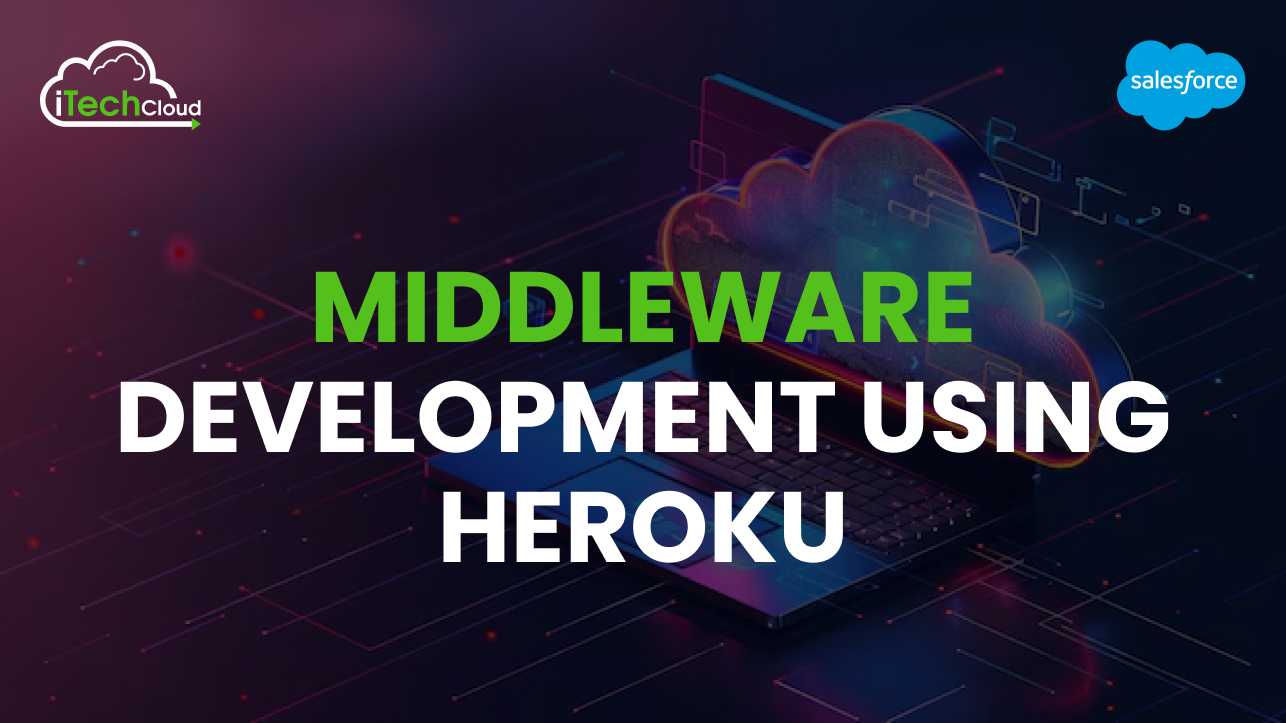Middleware serves as the connective tissue between various systems, applications, or services, ensuring seamless communication, data exchange, and operational efficiency. Heroku, a cloud Platform-as-a-Service (PaaS), offers robust tools and frameworks that make middleware development intuitive and efficient. This blog explores middleware development on Heroku, highlighting its benefits, capabilities, and key practices.
Understanding Middleware in Modern Architectures
Middleware is software that facilitates communication between disparate applications, databases, or systems. Common examples include:
- API Gateways: Manage and route API requests.
- Message Brokers: Handle asynchronous communication via queues.
- Data Transformers: Standardize or manipulate data formats.
- Integration Layers: Connect legacy systems with modern platforms.
Middleware is crucial in enterprise environments where multiple systems need to work together seamlessly without direct interaction.
Why Choose Heroku for Middleware Development?
Heroku stands out as a middleware development platform due to its ease of use, scalability, and integration capabilities. Key advantages include:
- Ease of Deployment: Heroku supports multiple programming languages, making it accessible for developers using Java, Python, Ruby, Node.js, or others.
- Built-in Scalability: Heroku’s dynos (lightweight containers) scale applications vertically or horizontally, accommodating fluctuating workloads.
- Seamless Integration: With Heroku Add-ons and the Heroku Connect feature, developers can connect to databases, third-party services, and Salesforce with minimal effort.
- Managed Infrastructure: Heroku abstracts infrastructure management, allowing developers to focus on building middleware logic rather than worrying about servers or networking.
- Extensive Ecosystem: Heroku’s rich marketplace of Add-ons provides pre-built solutions for logging, monitoring, caching, and more.
Middleware Use Cases on Heroku
Middleware on Heroku can address various integration and communication needs:
- API Integration: Centralize APIs to standardize communication across multiple applications.
- Event-Driven Systems: Use middleware for processing event streams and facilitating real-time data flows.
- Data Synchronization: Sync data between databases or systems, such as Salesforce and external ERPs.
- Authentication and Authorization: Implement authentication layers to secure communications between systems.
- Queue Management: Handle message queues for asynchronous processing.
Developing Middleware on Heroku: Key Steps
- Plan the Architecture
- Define the purpose and scope of your middleware.
- Identify the systems or applications it will integrate.
- Choose the programming language and frameworks best suited for your needs.
- Set Up the Heroku Environment
- Create a Heroku app using the Heroku CLI or web dashboard.
- Select the required Add-ons, such as Heroku Redis for caching or Heroku Postgres for database needs.
- Develop the Middleware
- API Development: Use frameworks like Express.js (Node.js) or Flask (Python) to create RESTful APIs.
- Message Queues: Integrate with message brokers like RabbitMQ or Kafka.
- Data Transformation: Write scripts or modules to handle data transformations.
- Testing
- Use tools like Postman to test APIs or middleware endpoints.
- Employ Heroku Pipelines to create staging environments for pre-production testing.
- Deployment
- Deploy the middleware using Git or Heroku’s continuous integration pipelines.
- Monitor performance using Heroku’s logging tools and Add-ons like New Relic.
- Scaling and Maintenance
- Monitor resource usage and scale dynos as needed.
- Regularly update the middleware to handle new requirements or improve performance.
Heroku Features for Middleware Development
- Dynos: Lightweight containers that host applications, enabling easy scalability.
- Heroku Connect: Facilitates bi-directional data synchronization between Heroku applications and Salesforce.
- Add-ons Marketplace: Offers tools for monitoring, caching, and database management, such as Papertrail for logs or Memcached for caching.
- Heroku Pipelines: Simplifies the CI/CD process, enabling smooth transitions from development to production.
- Log Drains: Provides centralized logging for debugging and performance monitoring.
Best Practices for Middleware Development on Heroku
- Leverage Modular Design
- Use microservices architecture to divide middleware into smaller, manageable units.
- Prioritize Security
- Implement TLS/SSL for secure data exchange.
- Use Heroku’s configuration variables to manage sensitive credentials.
- Optimize Performance
- Utilize caching to reduce latency in repetitive tasks.
- Optimize database queries and use connection pooling for efficient data access.
- Monitor and Troubleshoot
- Integrate tools like New Relic or Papertrail to monitor system performance and logs.
- Set up alerts for anomalies to address issues proactively.
- Automate Deployments
- Use Heroku Pipelines for continuous integration and deployment, minimizing downtime.
Challenges in Middleware Development on Heroku
- Integration Complexity: Connecting diverse systems may require custom solutions or adapters.
- Latency Concerns: Middleware introduces additional processing layers, potentially affecting response times.
- Cost Management: Scaling applications with multiple dynos or Add-ons can increase costs.
To mitigate these challenges:
- Use Heroku’s built-in monitoring tools to identify bottlenecks.
- Optimize the number of dynos and select cost-efficient Add-ons.
Case Study: Middleware for Salesforce Integration
A retail company needed to sync Salesforce data with its e-commerce platform. Using Heroku, they:
- Developed middleware with Node.js to handle API requests.
- Utilized Heroku Connect to sync Salesforce and Heroku Postgres.
- Deployed RabbitMQ for processing asynchronous updates.
The result: A scalable, reliable integration layer that reduced manual data handling and improved customer service response times.
Future Trends in Middleware Development
- Serverless Middleware: Incorporating serverless functions to further simplify middleware development.
- AI-Driven Middleware: Using AI for intelligent routing, anomaly detection, and predictive analytics.
- Event-Driven Architectures: Increased reliance on real-time data flows for modern applications.
Conclusion
Heroku’s robust PaaS capabilities make it an ideal platform for middleware development. Its ease of deployment, scalability, and extensive ecosystem empower developers to create efficient, secure, and scalable middleware solutions. By following best practices and leveraging Heroku’s features, organizations can streamline integrations and enhance operational efficiency.


